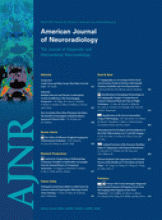Abstract
SUMMARY: In medical research analyses, continuous variables are often converted into categoric variables by grouping values into ≥2 categories. The simplicity achieved by creating ≥2 artificial groups has a cost: Grouping may create rather than avoid problems. In particular, dichotomization leads to a considerable loss of power and incomplete correction for confounding factors. The use of data-derived “optimal” cut-points can lead to serious bias and should at least be tested on independent observations to assess their validity. Both problems are illustrated by the way the results of a registry on unruptured intracranial aneurysms are commonly used. Extreme caution should restrict the application of such results to clinical decision-making. Categorization of continuous data, especially dichotomization, is unnecessary for statistical analysis. Continuous explanatory variables should be left alone in statistical models.
Abbreviations
- ACA
- anterior cerebral artery
- CHUM
- Centre hospitalier de l'Université de Montréal
- ICA
- internal carotid artery
- ISUIA
- International Study of Unruptured Intracranial Aneurysms
- MCA
- middle cerebral artery
- Pcirc
- posterior circulation
- PcomA
- posterior communicating artery
- SAH
- subarachnoid hemorrhage
- UIA
- unruptured intracranial aneurysms
- Copyright © American Society of Neuroradiology
Indicates open access to non-subscribers at www.ajnr.org







